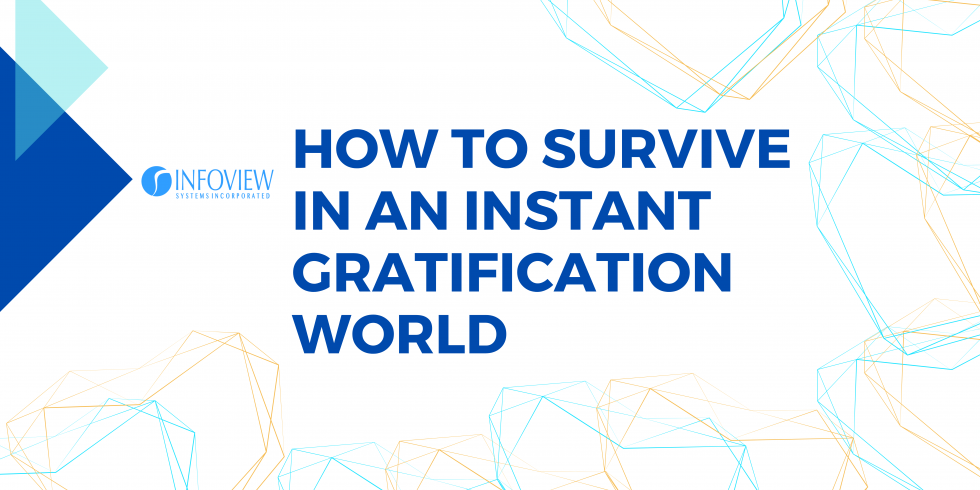How To Survive in an Instant Gratification World
As kids, we learn early that instant gratification leads to all kinds of troubles. Patience is supposed to reward us with more time to regroup, reassess and avoid compulsive decisions. This holds true for sweets and midnight tacos – but when it comes to supporting the key business processes and delivering the best customer experience, the instant results almost always beat the slow data. Consumers (myself included!), spoiled by same-day delivery, transcend these expectations into our professional life, dealing with distributors, partners, and employees. Many companies that rely on time-proven and stable but less reactive systems and architectures may find themselves in the process of a continuous catch-up games.
Most of the key business processes within an organization span multiple systems and personas. The quality of the process and business outcomes are directly tied to one simple metric – how fast can change made in one system, be available or visible in other applications? Traditional batch processes push the data from one system to another daily or hourly at best, and businesses must compensate for the delays, often at a cost of process quality, extra costs, and almost inevitably less than ideal customer experience.
The API and Event-driven integration solutions help to address this problem by providing the architecture, methodology, and tools for facilitating seamless near real-time hand-offs between the systems and human actors. There are some differences between API-first and event-first approaches, sometimes artificially hyped up by vendors focused on a specific style, however, conceptually they all rely on the following key capabilities and architecture patterns:
- Capture key business events or changes in various enterprise applications
- Route the changes to (or make changes easily available for) other internal and external systems to consume
- Enforce end-to-end security and governance policies to prevent sensitive data loss and ensure the availability of the system
- Maximize the reuse and self-service to accelerate adding the new channels and back-end applications
- Keep most or all of the routing, mapping, and cross-system orchestration logic out of any particular application – the middleware solution that ideally supports and governs both API and event-based requirements would be an appropriate place
There are several mature near real-time API or event-based integration platforms, such as Mulesoft and Confluent, that simplify the implementation of the transaction or event processing across multiple systems. In addition, various specialized tools help detect and capture the change. In the follow-up post, we will explore several underlying Change Data Capture (CDC) styles and available tools specifically for IBM i (AS/400, iSeries) based applications.
I realize that this article’s title is a bit too dramatic. Companies with solid products or services and established operations and market segments may continue to be successful despite the fact their order confirmation might only be sent the next day. Nevertheless, the world is changing. Expectations are growing, and the cost of entry for market disruptors is very low when built on very affordable public cloud services. API and event-driven architectures are a backbone for modern responsive solutions that, yes, feed our instant gratification demons and reward our (consumers) bad behaviors.

Recent Comments